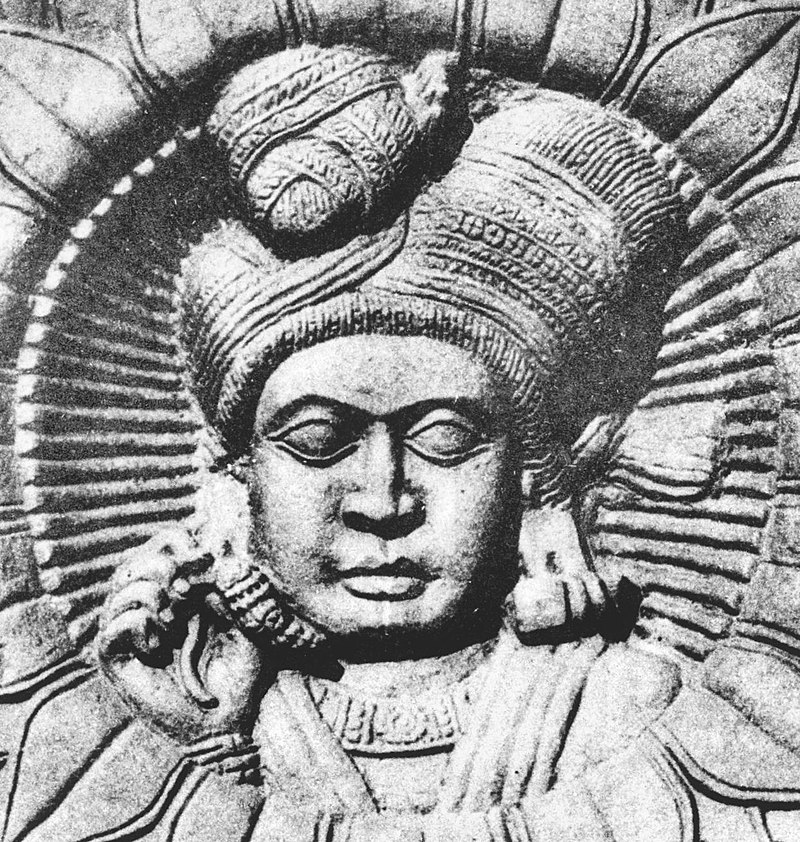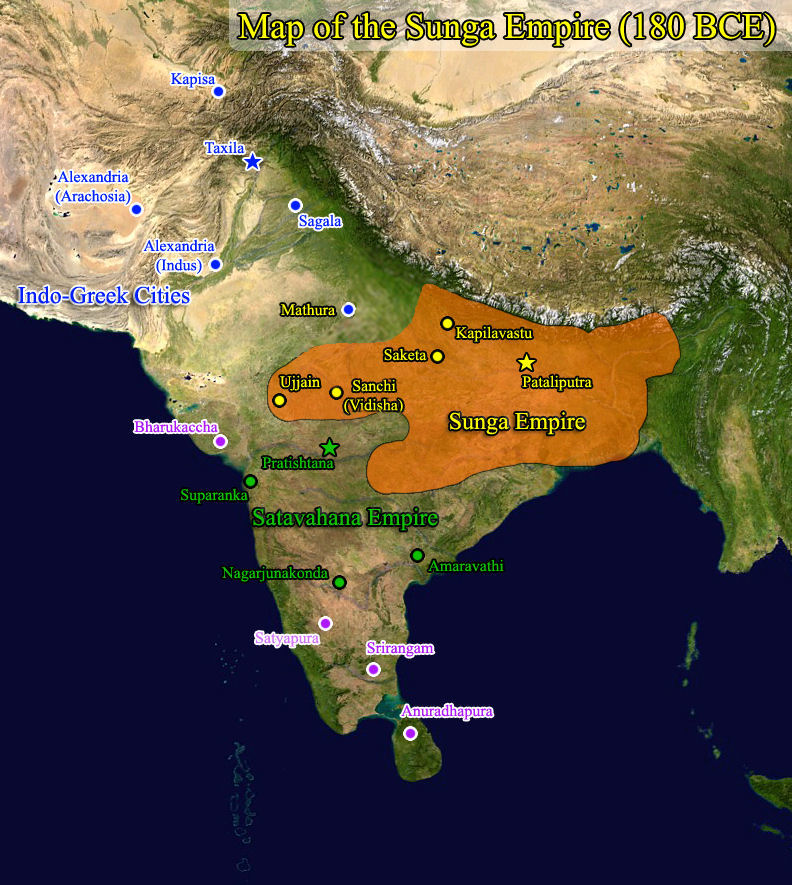There was a succession crisis after Ashoka in the Mauryan Dynasty. Sooner dynasty collapsed and a new dynasty named as Sunga Dynasty took over the empire of the Indian subcontinent. When Ashoka Maurya breathed his last, there was no able successor of that great emperor to keep the vast Maurya Empire united and strong. It was a tragedy with the ancient system of monarchy that the entire structure of administration centered on the personality of the monarch.
As long as the king was a capable ruler, the government worked successfully. But, when the person of the king showed signs of weakness, the system of governance also decayed into weakness. This is exactly what happened to the Maurya monarchical establishment when Asoka died, leaving behind him no worthy successor to govern the first all-India great empire.
Sunga Dynasty
Sunga Dynasty spanned from 185 BC to 73 BC and Kanva Dynasty spanned from 73 BC to 28 BC. The capital of the Sunga Dynasty was Vidisha (MP) and the capital of the Kanva Dynasty was Patliputra.
Pushyamitra Sunga

Pushyamitra Sunga was the Brahmin army chief of Brihadratha, the last king of the Mauryas. During a military parade, he killed Brihadratha and established himself on the throne in 185 or 186 BC.
According to some historians, this was an internal revolt against the last Mauryan king. Some say it was a Brahminical reaction to the Mauryan overwhelming patronage of Buddhism. Pushyamitra Sunga’s capital was at Pataliputra. He successfully countered attacks from two Greek kings namely, Menander and Demetrius. He also thwarted an attack from the Kalinga king Kharavela. He conquered Vidarbha. He followed Brahminism. Some accounts portray him as a persecutor of Buddhists and a destroyer of stupas but there has been no authoritative evidence to this claim.
During his reign, the Stupas at Sanchi and Barhut were renovated. He built the sculptured stone gateway at Sanchi. He performed Vedic sacrifices such as Ashvamedha, Rajasuya, and Vajapeya. Pushyamitra Sunga patronized the Sanskrit grammarian Patanjali. According to the Puranas, his reign lasted for 36 years. He died in 151 BC.
Agnimitra
He was the Pushyamitra’s son who succeeded him to the throne. His reign lasted from about 149 BC to 141 BC. By this time, Vidarbha broke away from the empire. Agnimitra is the hero of Kalidasa’s poem, Malavikagnimitram. His son Vasumitra succeeded him as king.
Last of the Sunga kings
Vasumitra’s successors are not clearly known. Different names crop up in several accounts such as Andhraka, Pulindaka, Vajramitra, and Ghosha. The last Sunga king was Devabhuti. He was preceded by Bhagabhadra.
Devabhuti was killed by his own minister, Vasudeva Kanva in around 73 BC. This established the Kanva dynasty at Magadha from 73 to 28 BC.
Effects of Sunga rule: Hinduism was revived under the Sungas. The caste system was also revived with the rise of the Brahmanas. Another important development during the Sunga reign was the emergence of various mixed castes and the integration of foreigners into Indian society.
The language of Sanskrit gained more prominence during this time. Even some Buddhist works of this time were composed in Sanskrit. The Sungas patronized art and architecture. There was an increase in the usage of human figures and symbols in art during this period.
Kanva Dynasty (73 BCE to 28 BCE)
The last ruler of the Sunga Dynasty, Devabhuti was murdered in 73 BCE and a new dynasty called Kanva Dynasty was founded by Vasudeva. Vasudeva was Devabhuti’s minister. The Kanva Dynasty lasted till 28 BCE. The other kings of the Kanva Dynasty were Bhumimitra, Narayana, and Susharman. The Kanva Dynasty was put to an end by the ruler of the Satavahana Dynasty.

